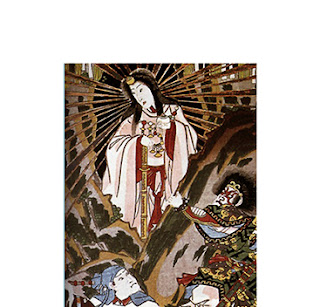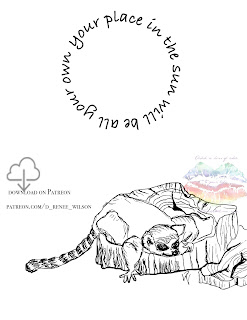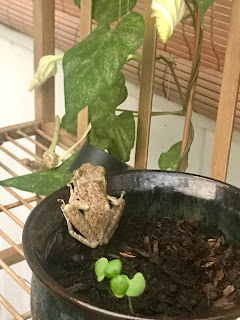I hope everyone had a brilliant midsummer and you're staying as cool as possible or splendidly sweaty upon your preference and locale.
If you didn't have time to celebrate or it slipped your mind, remember that midsummer was celebrated around July 5 before the Gregorian calendar was adopted. ;) Another reminder that cultures have tried to track time for millennia, and it's all a human construct anyway, btw making numerology a largely culturally subjective and egoic practice. You can visit this site to see a list of some in descending accuracies, with the Persian calendar introduced in the 2 C. BCE being the most accurate.
Sooooo, back to the star of the show; the Sun. Funny enough, the center of our solar system doesn't have an official name, according to the IAU. Solis is obviously the Latin for sun, from Sol, the Roman equivalent to Helios, Greek god of the Sun. For that matter, neither do any of the inner planets nor our moon. This is where culture and human anthropomorphizations get involved.
One of my very first memories is of having one hand on a sturdy sapling, swinging my body weight around and around it as my hand slid over the smooth bark. I pivoted on one foot, looked up and swung. I let the brilliantly blinding gold light enter my eyes and what felt like my entire being, again and again. And I sang. I sang songs to the sun. I was barely three. Most of my early vivid memories are just this. The sun and me gazing on it. I didn't have a name for it, That feeling. Jubilation? Bliss? I guess I didn't need one. I think that feeling is what humanity chases and gives a personhood in a god. A warm stillness. On the solstice it is with us the longest.
We love to name things. Our meat computers have adapted perfectly for this. The dance of visual cortex and frontal lobe to Broca's area is something we can't get enough of- if you're at all interested in the psych & neuroscience and want to dip your foot in this, read this article and then hit me up for more- as a RH artist with crossed aphasia during migraines, I love this topic! Not being able to communicate or place words during auras was a scary and frustrating thing for decades. Once I studied it more and began to release the need to label, riding out the waves of non-verbal time has been fairly enlightening.


(Amaterasu of Japan)
The Sun, whatever you want to call it, him, or even her. Yes, her. In Japan, the sun goddess, Amaterasu Omikame was the queen of heaven and earth. In ancient Mesopotamia she was Arinna. This theme crosses into Anatolia, where Hecate has her origins as a sun goddess that mediates between the upper and underworlds. (With no mention by Hesiod in Theogony of all the witchy traits later attributed to her.) It can be Ra or Helios, who eventually gives way to Apollo, then Sol, and today we come back to another son that has a birthday celebrated in December and I think you get the point. My point? Every. Culture. Is. Different. And. Evolves. (Buuuut really doesn't if it thinks it's the "correct" culture and there's nothing new under the ...)
Our constant across the globe? The sun! Need warmth? Need food? Need light? Vitamin D? Serotonin? Awesome, me too. There's a star for that!
According to each group of people and their location, climate, etc., the folklore and resulting pantheon therefore religious ritual is going to vary, but without it there will be no life. Period.
-I have an unpopular stance with some fellow animal lovers-
One- Zoos can make me sad. Like really sad. Two- I still support zoos by being a member. Conservation, endangered species breeding programs, and education can make all the difference for a young person. Environmental protections aren't in place to save our animal brothers and sisters, so someone has to be the "bad" guy. Deal with it and or get to fixin' their habitat, my friend.
Next to the spider monkeys (omg, you guys, we saw an actual monkey in the wild this weekend by our house but that's a whole other story) the ring tailed lemurs exhibit was obviously the biggest in the primate section. I'm betting this is because they are "famous" due to the movie Madagascar. That's where they are from, the southern end of Madagascar, along with 60 other species of lemurs throughout the rest of the country. I haven't seen the movie, but I've seen clips. Idk. I have thoughts that I'll get to at the end. anyhow- All lemurs are endangered due to habitat destruction.
The two lemurs had been engaged in a mutual grooming session, and one was now trying to move to the seat the other had held. A bit of roughhousing ensued which very quickly broke off with the two running to separate areas of the enclosure. One of the lemurs began stroking his very long striped tail between his hands repeatedly. The woman beside me began to comment how much, "He just loves that pretty tail of his! Show it off!" Then she laughed, walked off, and it got me thinking about one of my favorite (here read triggering) topics anthropomorphization in animal symbology.
What this lemur was actually doing by caressing his luxurious, long, striped tail was prepping for a "stink fight". The scent glands located on his upper wrists (and chest) secrete a strong pheromone that is unique to him.
Instead of engaging in violent spats, ring tailed lemurs waft their tails toward opponents and mark areas they want to stake as their own claim. What we were witnessing wasn't just grooming, and certainly not vanity- a uniquely human trait. It was a behavior that helps enforce boundaries and keeps confrontation from escalating to dangerous levels by using your very unique essence, so to speak. More sciencey details on stink fighting here. I think that's a behavior to meditate on, don't you?
Instead of engaging in violent spats, ring tailed lemurs waft their tails toward opponents and mark areas they want to stake as their own claim. What we were witnessing wasn't just grooming, and certainly not vanity- a uniquely human trait. It was a behavior that helps enforce boundaries and keeps confrontation from escalating to dangerous levels by using your very unique essence, so to speak. More sciencey details on stink fighting here. I think that's a behavior to meditate on, don't you?
The woman's comments, along with the lemur's unique homeland made me wonder what would happen if I looked up "lemur spirit animal" just for kicks. I personally don't believe in catchall copy paste guidelines from self proclaimed spiritual gurus, because honestly most of them are full of more bullshit than the rhino exhibit and don't know much about the animals they are talking about. Go figure. When I did, I unfortunately wasn't surprised. Most sites seem to copy and paste from each other and were a hodge podge of wishful thinking that works well with the Barnum effect and other cognitive biases.
These two were oft repeated to people searching for meaning of their "totem" & got me the most-
"Spirits (sometimes creature) of the night" - Yeah. Lemur species are varied and most are actually diurnal, like the sun-basking ring tail. :)
"Superficiality...manipulative" .
 |
| free download for patrons |
You know about stink fighting. Here are some other basic facts.
They greet the sun every day in lotus like position, exposing their bellies. This warms them from the chilly night, prepping them for a day of foraging leaves, small insects, socializing, hopping about, etc.
They are matriarchal. Holla.
 |
| free download for patrons here |
They can learn patterns, be taught tool use, and simple arithmetic.
They are good swimmers and can travel by raft, i.e. floating debris & vegetation. This is probably how most lemurs got to Madagascar from Africa and proliferated so successfully due to the lack of other primates.
Their name is from a Latin word for a type of specter, or scary restless ghosts, lemures.
"I call [the creatures in this genus] lemurs, because they go around mainly by night, in a certain way similar to humans, and roam with a slow pace." -Taxonomist Carl Linnaeus- When he had discovered small lemurs and also classified the loris as a lemur.
Ring tailed, Brown, Indris, etc. lemurs are diurnal, it is mostly the smaller lemurs that are nocturnal.
Ok? Basics down? I recommend going to observe them if you can. Then you can decide what the lemur is to you. As humans, we will absolutely find meaning in any and everything. Life has the meaning you give it. Cookie cutter meanings make cookie cutter lives. Just like all animal guide meditation/intentions, the focus should be personal.
I sketched a few poses. I had a nice time observing them and thinking about how we think about them. By the way, the lemur didn't get his spot. He found a new one. I sketched him trying to nap on it before he moved.
The watercolor artwork featured on this post is a ring tail in his sun worship pose, with a circumpunt for the sun, upward equilateral for fire, and various intersecting lines at points for my own as a reminder of balance, harmony, and flow.
It is a reward for tier 3+ patrons. If you're not a patron but dig it, you can purchase a print here.
It is a reward for tier 3+ patrons. If you're not a patron but dig it, you can purchase a print here.
You'll see in the other reward downloads based on the lemur that my idea of sun worship and recharging isn't as fire as everyone goes on and on about. What I got from my meditative time after the lemur solstice;
There are no formulas for something that hasn't been yet. No wrote ritual or pose. No expectations from others of what it should be. Breaks are goods, naps are even better. No need to oust another or compete. You don't ever need another to give you permission or direction.
That perfect spot, your place in the sun, it will be yours and yours alone.
That said- excuse any typos, s'il vous plait. It's hot af and I need a swim break. It's pretty hot.
All tiers of Lemur solstice rewards are up for supporters on Patreon, and the July moon phase calendar for Tier1 +will be up Sunday.
See you soon,
~D. Renée



















